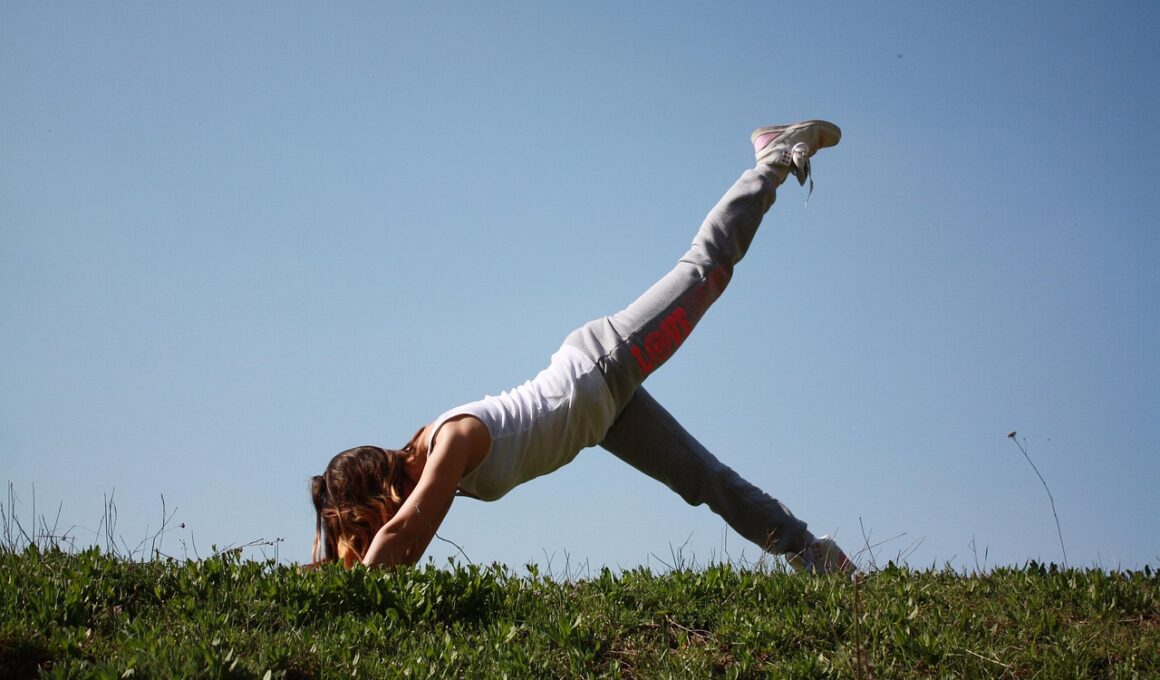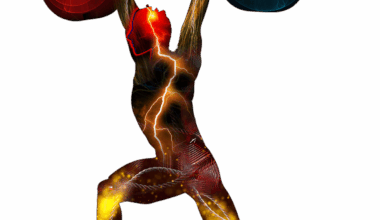Stretching and Strengthening: The Dual Approach of Pilates
Pilates is a unique form of exercise that focuses on enhancing body alignment through a combination of stretching and strengthening techniques. As individuals practice Pilates, they engage in a rigorous routine that promotes flexibility, core strength, and overall muscle tone. The practice necessitates mindful breathing, which aids in synchronizing one’s movements with their breath. This engagement encourages better body awareness and enhances focus during sessions, resulting in improved physical coordination. Stretching in Pilates is paramount, aiding in the lengthening of muscles and joints, enhancing mobility and reducing the risk of injuries. On the other hand, the strength component fortifies muscles, particularly the core, which serves as the foundational support for the entire body. In understanding this dual approach, practitioners can see the benefits of cultivating both flexibility and strength, which contribute to a more balanced physical condition. Overall, Pilates offers a holistic method of strengthening while promoting the necessary elements of alignment through regular practice. Exploring these synergies enriches one’s overall fitness journey, providing multiple benefits linked to health and wellness through consistent practice.
Benefits of Stretching in Pilates
One of the primary benefits of incorporating stretching in Pilates is enhanced flexibility. As muscles are stretched, they become longer, allowing for increased range of motion in the joints. This increased flexibility can lead to improved performance in other physical activities, as well as a decreased risk of injury. Furthermore, stretching promotes better circulation, which warms the muscles and tissues, preparing them for more intense forms of exercise. For practitioners, understanding the techniques of stretching in Pilates also helps prime the body for movements that require more strength and control. Through specific exercises that emphasize lengthening muscles, individuals can discover the limits of their body while pushing toward greater flexibility. The disciplined approach within Pilates emphasizes controlled movements, ensuring that stretching is safe and effective. Moreover, regular stretching can alleviate muscle tension that accumulates due to daily activities or stress. Engaging in stretching practices creates an internal balance that contributes to overall wellbeing, heightening both physical and mental health. Ultimately, this focus on stretching sets the stage for achieving optimal body alignment, which is vital within Pilates.
Alongside stretching, strengthening plays a crucial role within Pilates, contributing to core stability which is a vital aspect of physical health. A strong core stabilizes the spine, supports good posture, and allows for proper movement mechanics. Strength training in Pilates focuses predominantly on the abdominal muscles, but extends to the back, hips, and shoulders as well. This multi-dimensional strengthening fortifies the entire body’s musculature, leading to enhanced performance in various physical activities. As practitioners engage in specific Pilates exercises, they become more aware of their core strength, learning to activate these muscles effectively during everyday activities. The enhancement of muscle strength from Pilates translates into improved athletic performance, making it an excellent choice for athletes and beginners alike. Furthermore, having a strong core reduces the risk of back pain, a common complaint in many individuals due to sedentary lifestyles. Strengthening exercises also add a layer of resilience to the body, making it less susceptible to injuries during other physical activities. Overall, a well-rounded approach that combines stretching with strengthening in Pilates cultivates both flexibility and power.
The Role of Breathing in Pilates
Breathing plays a crucial role in the practice of Pilates, as it connects the mind and body during exercise. Proper breathing techniques enhance the effectiveness of both stretching and strengthening exercises. Inhale and exhale patterns not only ensure adequate oxygen supply to working muscles but also help maintain focus and promote relaxation. Practitioners often learn to breathe into their ribs to encourage thoracic expansion, which aids in better posture and alignment. Effective breathing techniques can activate the deep core muscles, further enhancing stability through each movement. The emphasis on coordination between breath and movement supports both the physical and mental aspects of practice. Mindful breathing encourages awareness of the body’s movements and the sensations experienced during exercises. By integrating breath within routines, practitioners find it easier to perform challenging sequences smoothly and fluidly. This connection fosters a deeper sense of focus, promoting mindfulness and reducing stress during workouts. Ultimately, mastering breath control enhances results from both stretching and strengthening aspects of Pilates, creating a balanced workout experience that nurtures overall physical health.
Another significant aspect of Pilates is its applicability for people of all fitness levels. Whether you are a beginner or an experienced athlete, Pilates can be tailored to meet individual needs. The exercises can be modified to accommodate varying abilities, making it an inclusive practice. This adaptability means that individuals can progressively challenge themselves as their skills develop. Beginners are often introduced to foundational movements that lay the groundwork for more advanced techniques, focusing on core engagement and body alignment. As strength and flexibility improve, practitioners can gradually increase exercise intensity, incorporating more challenging movements. This progressive nature makes Pilates an excellent option for both rehabilitation and fitness enhancement. Beyond physical benefits, Pilates fosters a supportive community feel, encouraging partnerships and group classes. Practicing in a group setting allows individuals to share experiences, learning from each other while motivating one another. Furthermore, guidance from experienced instructors enhances the learning process, ensuring proper alignment and safety in exercise execution. This supportive environment enhances adherence as individuals find themselves motivated to attend classes and commit to this effective workout routine.
Common Misconceptions about Pilates
Despite its growing popularity, several misconceptions surround Pilates that can deter potential practitioners. One common myth is that Pilates is only for women or is not a serious workout. In reality, Pilates offers a diverse array of benefits for everyone, regardless of gender. Men also greatly benefit from the core strengthening, improved posture, and enhanced sports performance that the practice provides. Additionally, some individuals believe that Pilates solely focuses on flexibility, neglecting the strength aspect. This misconception can lead many to overlook the robust emphasis on muscle engagement and core stability integral to the practice. Pilates can indeed be an intense workout and is recognized for building substantial strength and endurance. Another frequent belief is that Pilates requires specialized equipment, thereby rendering it inaccessible to the average person. While reformers and other equipment enhance the experience, mat Pilates provides an effective and equally beneficial workout. Ultimately, understanding the core principles of Pilates can open up opportunities for numerous individuals seeking a holistic approach to fitness that harmonizes strengthening and alignment through mindful movement.
In conclusion, Pilates embodies a holistic approach to fitness by intertwining stretching and strengthening, promoting an all-inclusive practice for body alignment. The techniques inherent in this practice foster enhanced flexibility and core stability, enabling practitioners to improve their overall fitness levels regardless of their starting point. Mindful breathing further elevates the experience, establishing a connection between the mind and body throughout the workout. With a growing community of practitioners, Pilates presents both individual enhancement and a collective sense of support that encourages commitment to a healthy lifestyle. Addressing common misconceptions can help attract more individuals to experience the transformative potential of Pilates. As more people embrace this dual approach, they will discover the long-term benefits associated with regular practice, including better postural alignment, reduced stress levels, and enhanced overall well-being. This rich tradition of Pilates offers a valuable opportunity for personal growth through rigorous physical activity. With both novice and seasoned practitioners embracing its principles, Pilates stands as a beacon of health, promoting the synthesis of strength and flexibility while fostering an environment of inclusion and personal achievement.
Visual representation: 


